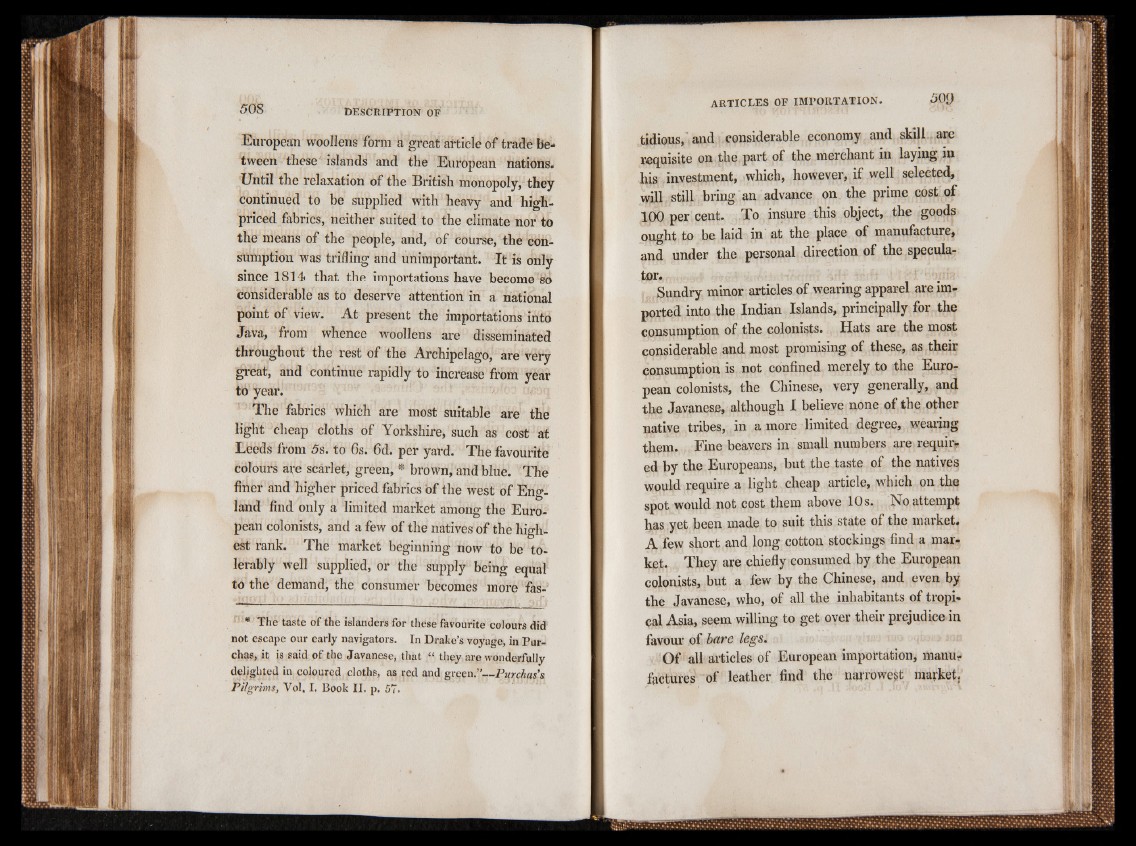
European woollens form a great article of trade between
these' islands and the European nations*
Until the relaxation of the British monopoly, they
continued to be supplied with heavy and high-
priced fabrics, neither suited to the climate nor to
the means of the people, and, of course, the consumption
was trifling and unimportant. It is only
since 1814 that the importations have become so
considerable as to deserve attention in a national
point of view. At present the importations into
Java, from whence woollens are disseminated
throughout the rest of the Archipelago, are very
great, and continue rapidly to increase from year
to year.
The fabrics which are most suitable are the
light cheap cloths of Yorkshire* such as cost at
Eeeds from 5s. to 6s. 6d. per yard. The favourite
colours a^e scarlet, green, * brown, and blue. The
finer and higher priced fabrics A " of the west of EnfOf- land find only a limited market among the European
colonists, and a few of the natives of the highest
rank. The market beginning now to be tolerably
well supplied, or the supply being equal
to the demand, the consumer becomes more fas-’
* The taste of the islanders for these favourite colours did
not escape our early navigators. In Drake’s voyage, in Pur-
chas, it is said of the Javanese, that “ they are wonderfully
delighted in coloured cloths, as red and green.”—Purchas’s
Pilgrims, Vol. I. Book II. p. 57.
tidious, and considerable economy and skill are
requisite on the part of the merchant in laying in
his investment, which, however, if well selected,
will still bring an advance on the prime cost of
100 per cent. To insure this object, the goods
ought to be laid in at the place of manufacture,
and under the personal direction of the speculator
.S
undry minor articles of wearing apparel are imported
into the Indian Islands, principally for the
consumption of the colonists. Hats are the most
considerable and most promising of these, as their
consumption is not confined merely to the European
colonists, the Chinese, very generally, and
the Javanese, although I believe none of the other
native tribes, in a more limited degree, wearing
them. Fine beavers in small numbers are required
by the Europeans, but the taste of the natives
would require a light cheap article, which on the
spot would not cost them above 10s. No attempt
has yet been made to suit this state of the maiket.
A few short and long cotton stockings find a market.
They are chiefly consumed by the European
colonists, but a few by the Chinese, and even by
the Javanese, who, of all the inhabitants of tropical
Asia, seem willing to get over their prejudice in
favour of bare legs.
O f all articles of European importation, manufactures
of leather find the narrowest market.